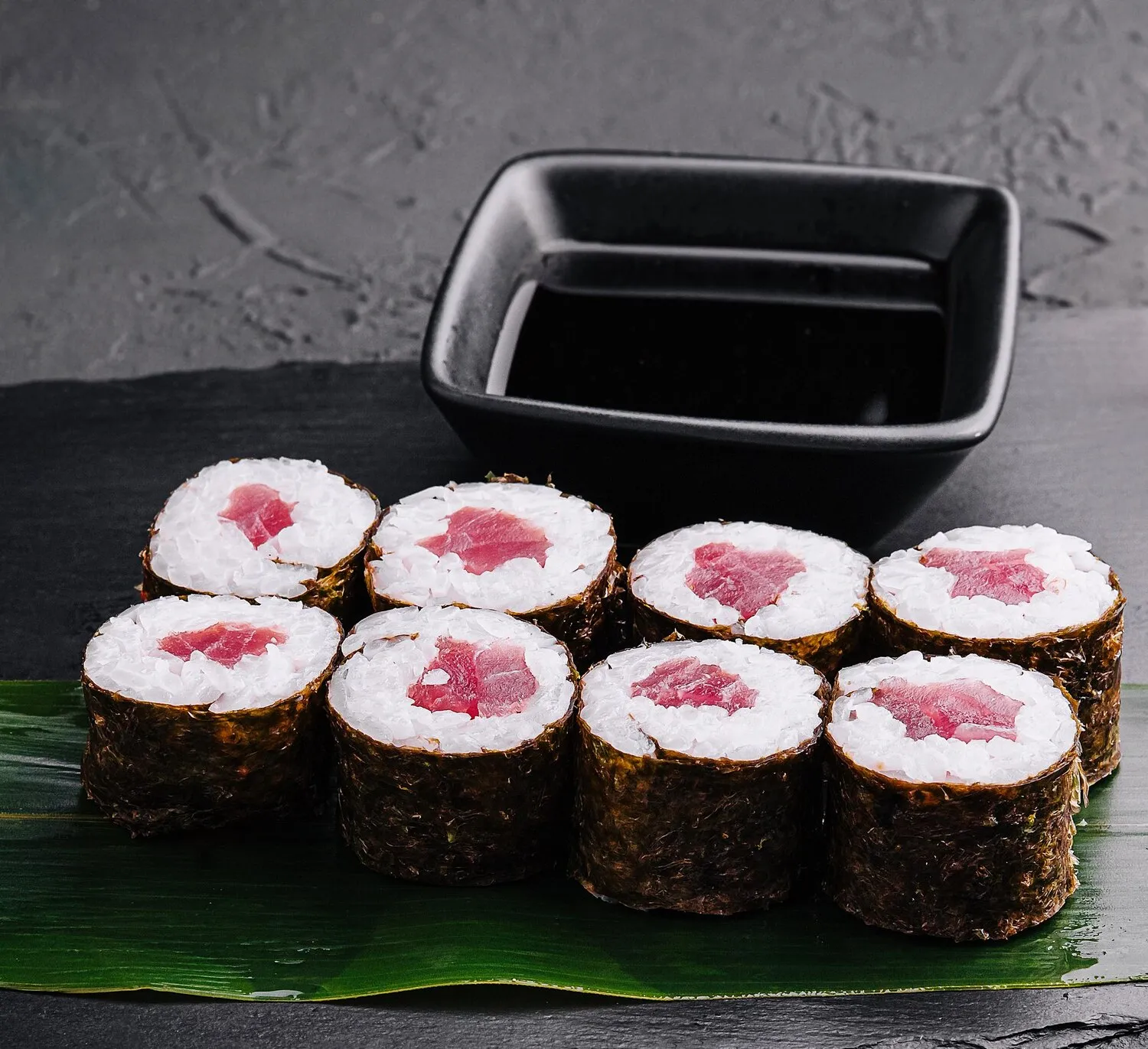
Maki Rolls
Sushi rolls that come in different varieties. From the basic California roll to more complex and creative rolls, they are a staple of any sushi restaurant.
Nutrition Facts
* The % Daily Value (DV) tells you how much a nutrient in a serving of food contributes to a daily diet. 2,000 calories a day is used for general nutrition advice.
Maki rolls evolved from earlier forms of sushi, primarily the process of preserving fish in fermented rice. The modern maki style, with ingredients rolled within seaweed, gained popularity in the Edo period (1603-1868) and has since become a globally recognized and adapted culinary form.
Maki rolls are deeply embedded in Japanese culinary culture and are often associated with celebrations, social gatherings, and special occasions. The art of making maki is considered a skill, and the presentation is often carefully considered.
Sushi Etiquette
Eating sushi, including maki rolls, is often governed by certain etiquette. While not strictly enforced outside of formal settings, using chopsticks correctly, avoiding excessive soy sauce, and eating the maki in one or two bites are generally appreciated.
Omakase
In some sushi restaurants, diners may opt for 'omakase,' which means 'I'll leave it to you.' This allows the chef to create a personalized selection of sushi, including maki rolls, based on the freshest available ingredients.
Bento Boxes
Maki rolls are a common component of bento boxes, a popular Japanese lunch tradition where a single-portion meal is carefully arranged in a box.
Maki rolls offer a diverse flavor profile, balancing the umami of seaweed and seafood with the subtle sweetness of vinegared rice and the varying tastes of fillings.
The primary flavors include the savory and slightly salty taste of nori (seaweed), the subtly sweet and tangy taste of sushi rice (rice seasoned with vinegar, sugar, and salt), and the fresh, clean taste of the fillings. Fillings can range from delicate raw fish like tuna and salmon to cooked ingredients like crab or vegetables. Complementary flavors are often added through condiments like soy sauce, wasabi (Japanese horseradish), and pickled ginger (gari).
Rice Preparation
Use short-grain Japanese rice and season it properly with sushi vinegar for the authentic taste. Allow the rice to cool slightly before using.
Nori Handling
Toast the nori sheet lightly before use to enhance its flavor and crispness. Keep unused nori sheets sealed to prevent them from becoming soggy.
Rolling Technique
Use a bamboo sushi rolling mat (makisu) to achieve a tight and uniform roll. Wet the mat with water to prevent the rice from sticking. Distribute the fillings evenly and avoid overfilling.
Cutting the Roll
Use a very sharp, wet knife to cut the maki roll into even pieces. Wipe the blade after each cut to prevent rice from sticking.
Explore additional Japanese dishes and restaurants
Explore JapaneseDiscover top dining spots and culinary experiences in Lethbridge.
Explore LethbridgeLearn more about the food culture, restaurant scene, and culinary heritage of Canada.
Explore Canada